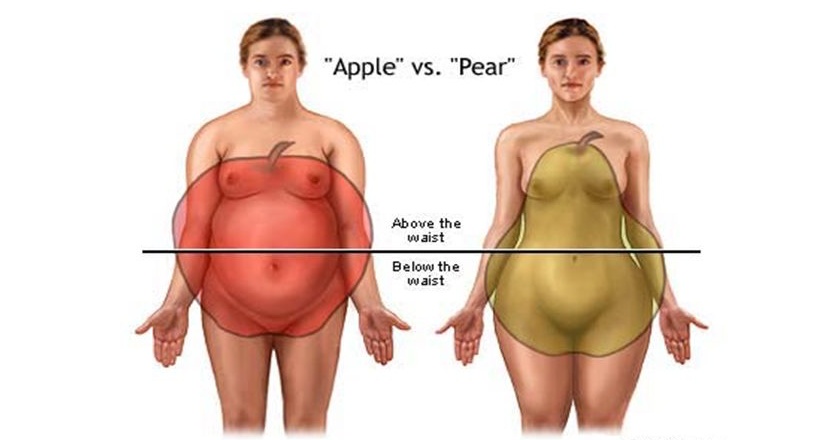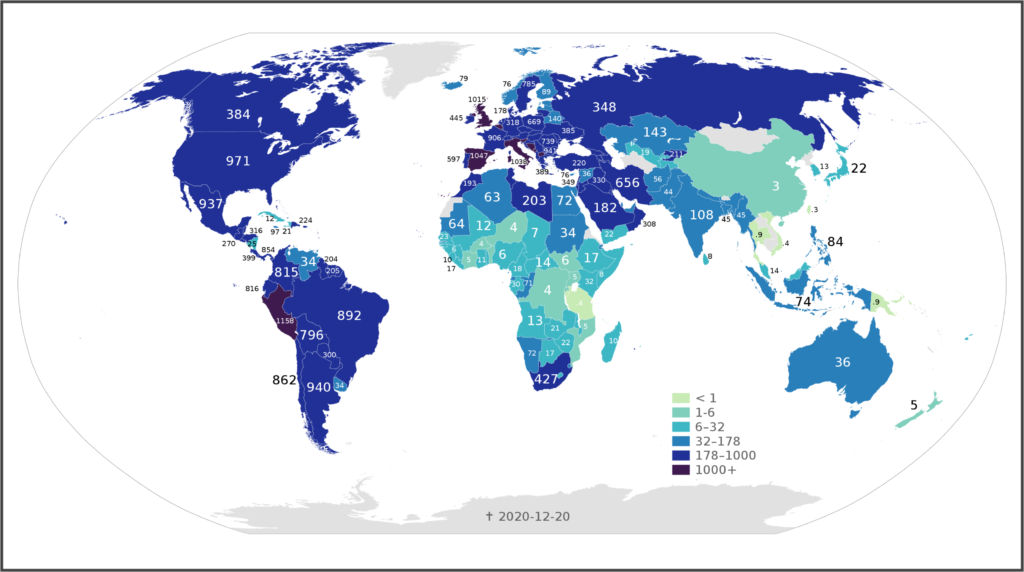[Updated on December 28th, 2020]
More or less 40% of the US population is obese [1]. Obesity contributes to multiple secondary diseases of which many correlate with COVID-19 complications and co-morbidities (e.g. heart conditions, hypertension, type 2 diabetes, inflammation, asthma, etc.).
Obesity with mild and full metabolic dysfunction, albeit to a different extent, both produce pro-inflammatory adipokines [2].

However, males are more prone to develop android obesity (where fat accumulates in the abdomen region), and females are more prone to develop gynoid obesity (where fat accumulates in the hip and thigh areas).
Android obesity means the fat accumulates around many important organs in the body in the abdomen and thorax.

That kind of obesity, means that its negative effects, at least the inflammatory ones, are closer to and affect the important organs more.
Obesity in general, and inflammation in particular, are closely associated with COVID-19 severe cases and mortality (see below).
As men are more prone to develop android obesity; obesity, with mild or full metabolic dysfunction, produces pro-inflammatory adipokines; and obesity and inflammation are both associated with COVID-19 mortality; that may partly explain why 54% of COVID-19 deaths are males vs 46% females [3].
How Obesity Overlaps With COVID-19
Note in the maps below how mortality rates per million are higher in regions where obesity is higher.
Map showing obesity rates in the world [4]:

Map showing COVID-19 confirmed deaths per million population by December 20th, 2020 [5]:

A Study Finds Obesity Is Correlated With COVID-19 Hospitalizations
A study called “Comparison of the characteristics, morbidity, and mortality of COVID-19 and seasonal influenza: a nationwide, population-based retrospective cohort study” [6] mentions the following:
Patients with COVID-19 were more frequently obese or overweight, and more frequently had diabetes, hypertension, and dyslipidaemia than patients with influenza, whereas those with influenza more frequently had heart failure, chronic respiratory disease, cirrhosis, and deficiency anaemia.
References
[1] Adult Obesity Facts – by CDC: https://www.cdc.gov/obesity/data/adult.html
[2] Adipokines in inflammation and metabolic disease – Ouchi et al: https://www.ncbi.nlm.nih.gov/pmc/articles/PMC3518031/
[3] COVID-19 mortality by age and sex – CDC: https://www.cdc.gov/nchs/nvss/vsrr/covid_weekly/index.htm#AgeAndSex
[4] Share of adults that are obese, 2016 – by Our World in Data: https://ourworldindata.org/grapher/share-of-adults-defined-as-obese
[5] Covid-19 pandemic by country and territory – by Wikipedia: https://en.wikipedia.org/wiki/COVID-19_pandemic_by_country_and_territory
[6] Comparison of the characteristics, morbidity, and mortality of COVID-19 and seasonal influenza: a nationwide, population-based retrospective cohort study – by Prof Lionel Piroth, MD, Jonathan Cottenet, MSc, Anne-Sophie Mariet, MD, Prof Philippe Bonniaud, MD, Mathieu Blot, MD, Pascale Tubert-Bitter, PhD, et al. – Published on December 17, 2020: https://doi.org/10.1016/S2213-2600(20)30527-0